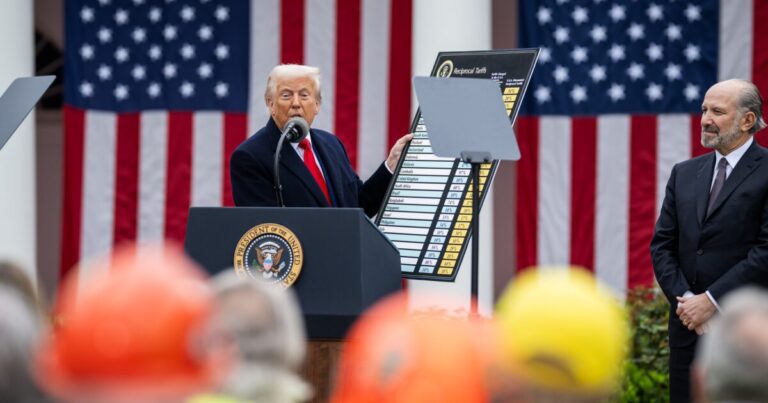Trump to Implement New “Reciprocal” Tariffs on Trade Partners
Overview of the New Tariffs
In a significant announcement, former President Donald Trump revealed plans to introduce "reciprocal" tariffs targeting countries that fail to reach trade agreements with the United States. This move is expected to impact various international trading partners significantly.
Details of the Tariff Announcement
During a recent press conference following his speech at the Iowa State Fairgrounds, Trump stated, “We’re going to start sending letters out to various countries starting [Friday]. We’ll probably have 10 or 12 go out.” The tariffs proposed will vary in percentage, potentially ranging from 10% to as high as 70%.
Potential Impact of Tariffs
The tariffs are part of a broader strategy aimed at addressing trade imbalances and inequities. Trump previously announced a new baseline tariff rate of 10%, which is nearly three times previous figures. The implications could be far-reaching, particularly for countries identified as having unfavorable trade practices.
What to Expect
- Tariff Range: 10% to as high as 70%
- Initial Letters Sent: Approximately 10 to 12 countries
- Coverage by July 9: Trump anticipates that all targeted countries will be formally notified by this date.
Countries in the Crosshairs
While specifics on the targeted countries remain undisclosed, Trump has indicated that certain nations, particularly in the EU and Japan, may face the brunt of these new measures. He referred to Japan’s negotiation tactics as "spoiled" and hinted at a potential tariff rate as high as 35% for Japanese goods.
Countries to Watch
- European Union: Targeted for tough negotiations
- Japan: High-risk due to Trump’s recent comments
Trade Negotiations Going Forward
The strategy behind the tariffs appears to be a negotiating tactic to bring countries back to the table for more equitable trade agreements. As Trump continues to call out specific trading partners, clarity will develop regarding who will receive the tariff notifications.
Summary
The introduction of these "reciprocal" tariffs marks a bold step from Trump, aiming to recalibrate trade relationships globally. With prominent countries like the EU and Japan in focus, the forthcoming weeks will reveal the effectiveness and consequences of these new policies.
For further information on current trade tariffs and strategies, refer to resources like the U.S. Trade Representative and economic analysis from Marketplace.
By remaining informed and engaged, readers can better understand the evolving landscape of international trade and its implications.


